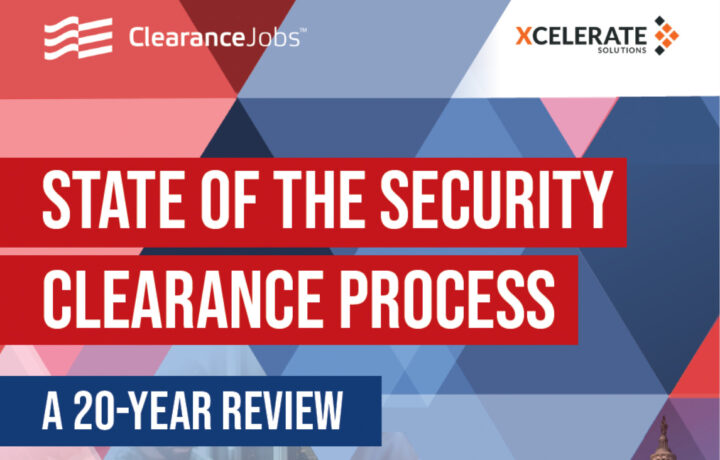ClearanceJobs has released its State of the Security Clearance Process. This year, in honor of 20 years of Intelligence Reform, the report takes us on a journey through the past and peaks into the future—outlining improvements and overhauls of security clearance processes and policies over the past two decades. Here are a few highlights.
Critical milestones include the enactment of the Intelligence Reform and Terrorism Prevention Act (IRTPA) in 2004, which reorganized the Intelligence Community and established the Office of the Director of National Intelligence. Over a decade later, Trusted Workforce 2.0 was established in 2018, and the ongoing implementation of the National Background Investigation Services (NBIS) began its steady march forward.
Streamlining and Modernizing the Clearance Process
The implementation of Continuous Vetting (CV) and technological advancements, like the transition from e-QIP to eApp, have improved the efficiency of application submissions and investigations. These changes reflect a growing commitment to modernizing and aligning personnel security processes with today’s national security demands.
“We’re at an inflection point with regards to personnel vetting across the federal government” said Brett Mencin, Vice President of Personnel Security Programs at Xcelerate Solutions. “With the advent of the Trusted Workforce 2.0 policy framework—the first of its kind in the past 50 plus years—operational mission-owners now have what they need to lean into these initiatives and drive the reform necessary to give the enterprise what it needs.”
Despite two decades of progress, challenges remain that continue to impact the efficiency and reliability of the clearance process.
Hurdles: Persistent Challenges Impacting Progress
The delayed rollout of the National Background Investigation Services (NBIS) has hampered efforts to modernize the system thoroughly. Additionally, issues such as inconsistent reciprocity between agencies and concerns about the quality of investigations continue to impact timeliness and trust in the process, underscoring the need for sustained reform efforts.
For an in-depth timeline of the past 20 years, download the ungated report here.




